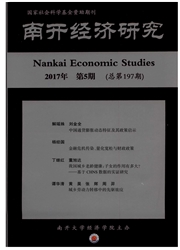

 中文摘要:
中文摘要:
随着国家间投入产出数据库建设的逐渐成熟,利用该数据进行价值层面的贸易增加值分解研究也取得了同步推进。本文根据国家间投入产出表,比较了几类典型的贸易增加值分解方法。在此基础上对Koopman等(2012)提出的方法从总需求和总供给分析的角度进行了拓展,并利用该拓展方法从全球价值链的角度对中国贸易情况进行了分析。对出口贸易增加值分解结果显示,上世纪90年代以来,投资带来的出口贸易需求一直呈现上升态势;从出口产品的供给角度而言,资本投入成为供给增加的决定力量而且越来越重要,高技术劳动投入比重上升,同时低技术劳动投入比重有所下降。
 英文摘要:
英文摘要:
With the development of World Input-Output Database(WIOD),the study on trade value-added decomposition based on WIOD has developed as well. The paper compared two kinds of typical decomposition methods according to WIOD. The paper developed the method proposed by Koopman et al.(2012)from aggregate demand perspective,and used the method to decompose China′s trade performance. The result of decomposition in export value-added shows that since 1990 s, the domestic export′s value-added of China has driven by investment demand;From supply perspective of export,capital input has displayed a rising deciding role,and the ratio of high-tech labor input has been increased while low-tech has been decreased at the meanwhile.
 同期刊论文项目
同期刊论文项目
 同项目期刊论文
同项目期刊论文
 期刊信息
期刊信息
